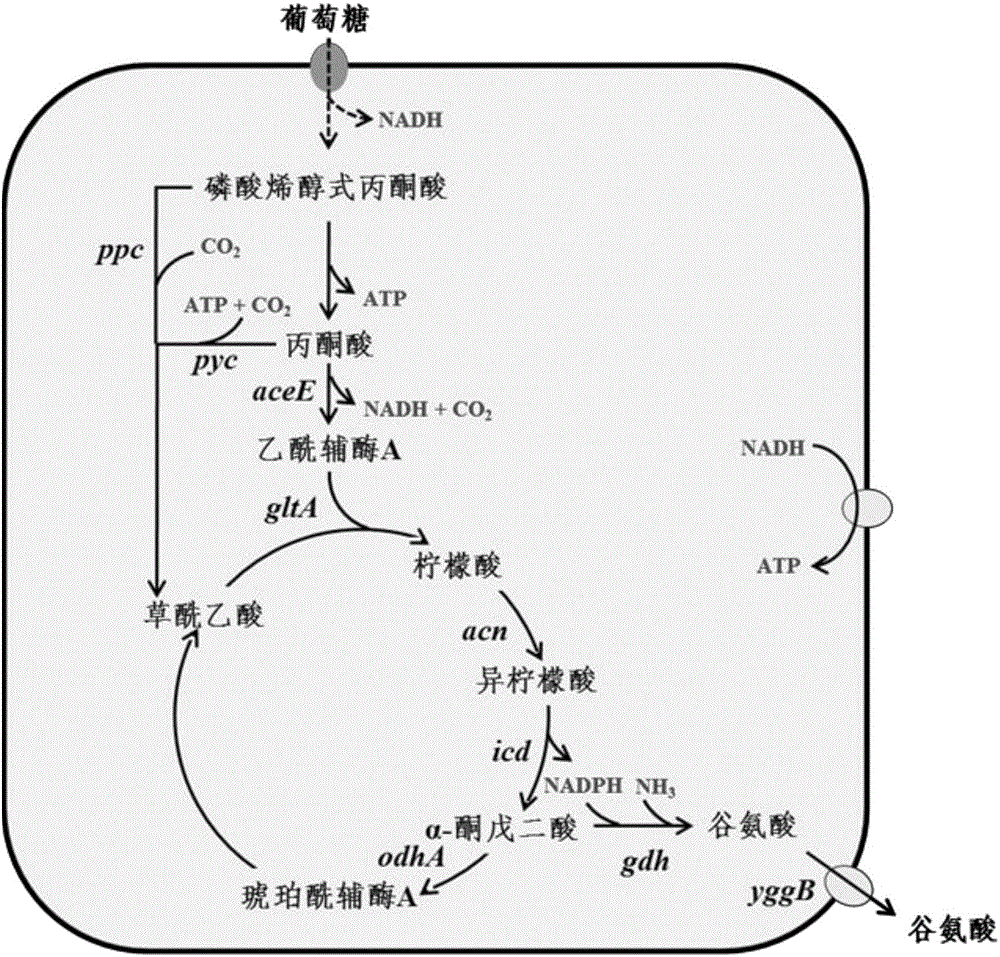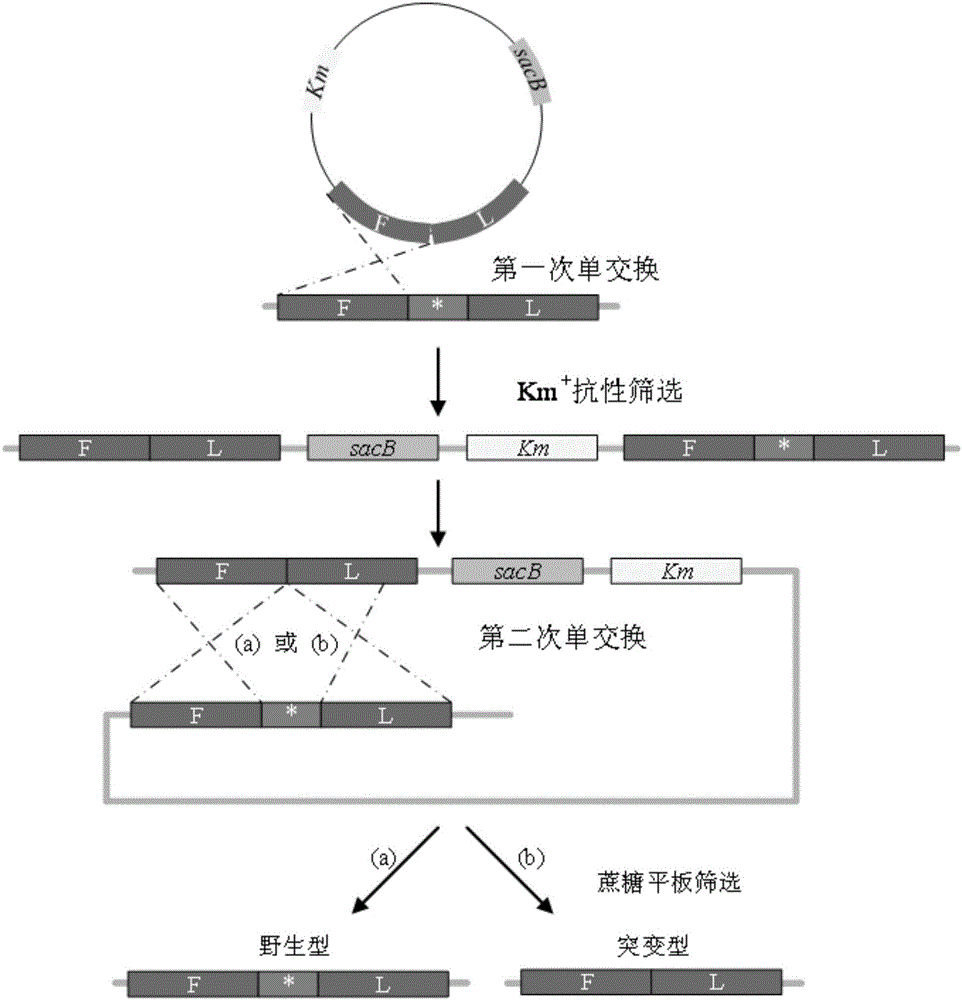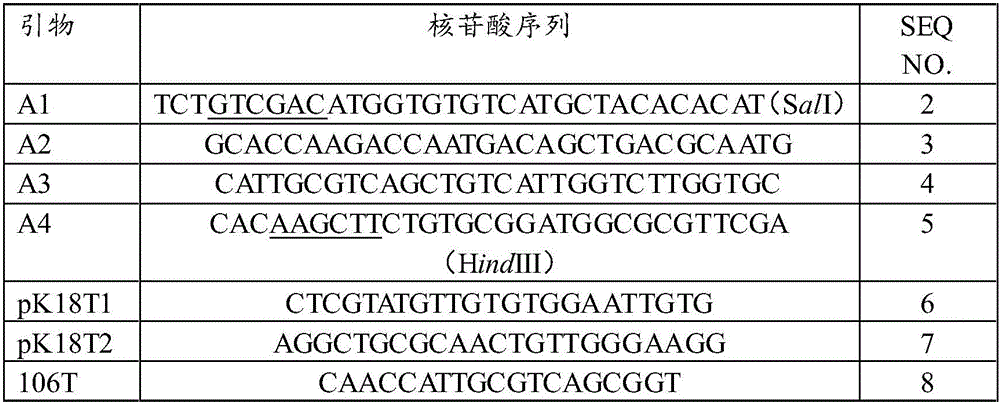Recombinant strain and application thereof
A technology of recombining bacterial strains and genes, applied in the field of microorganisms, can solve problems such as low yield and increased production costs
- Summary
- Abstract
- Description
- Claims
- Application Information
AI Technical Summary
Problems solved by technology
Method used
Image
Examples
preparation example Construction
[0046] Preparation of Corynebacterium glutamicum Competent: Stretch and transfer Corynebacterium glutamicum species ATCC13869 to BHI plate in -80°C refrigerator, cultivate at 30°C; pick a single colony, and transfer to 5ml BHI liquid medium (3.7% Brain heart extract powder) test tube, 200rpm, 30 ℃ culture 12h; Inoculate 100ml BHIS liquid medium (3.7% brain heart extract powder, 9.1% sorbitol) according to 1% inoculum amount, 200rpm, 30 ℃ culture until OD600 reaches 1.5 Centrifuge at 4°C for 20min at 6000rpm, collect the cells, discard the supernatant; suspend in TGBuffer (1mM Tris, 10% glycerol (v / v), pH7.5), centrifuge at 4°C for 20min at 6000rpm, discard the supernatant, And repeat again; after suspending with 10% glycerol, centrifuge at 4°C, 6000rpm for 20min, discard the supernatant, and repeat again; add 1ml of 10% glycerol to suspend the cells and pack. Store the competent cells in a -70°C refrigerator or directly use them for electroshock transformation.
[0047] Elect...
Embodiment 1
[0059] The introduction of embodiment 1 yggB gene A106V point mutation
[0060] (1) Vector construction for yggBA106V point mutation
[0061] According to the DNA sequence (SEQ NO.1) of Corynebacterium glutamicum ATCC13869 yggB gene (GeneBank NO.: NCgl1221), primers were designed for PCR amplification. The primer sequences are shown in Table 1.
[0062] Table 1 Primer Sequence
[0063]
[0064] The whole genome sequence of wild-type Corynebacterium glutamicum C. glutamicumATCC13869 was extracted with Genome DNA Extraction Kit (Tiangen Company). Using the extracted genome as a template, A1 / A2, A3 / A4 primer pairs were used to PCR amplify under the action of Phusion ultra-fidelity polymerase (NewEngland BioLabs) to obtain the homology arms of the 106th amino acid upstream and downstream of the yggB gene, PCR parameters 98°C for 10s, 50°C for 20s, 72°C for 20s, a total of 30 cycles. The PCR products were recovered by tapping the gel with an agarose gel recovery kit (Tiangen ...
Embodiment 213869
[0068] Inactivation of odhA gene in 213869-yggBA106V bacterial strain
[0069] The glutamate biosynthetic pathway ( figure 1 ) shows that the conversion of α-ketoglutarate to succinyl-CoA catalyzed by α-ketoglutarate dehydrogenase complex (ODHC) in the tricarboxylic acid cycle is the main competitive pathway of glutamate synthesis. To reduce the activity of ODHC, it is necessary to inactivate the gene odhA encoding its Elo subunit. The method used is to introduce base deletion, so that frameshift mutation occurs during protein synthesis, so as to achieve the purpose of inactivation.
[0070] (1) Used for the construction of odhA base deletion vector
[0071] First, in the NCBIGenBank database, obtain the nucleotide sequence (SEQIDNo.9) of the Corynebacterium glutamicum (Corynebacterium glutamicumATCC13869) odhA gene (GeneBankNO.NCgl1084), thus the nucleotide sequence design introduces base deletions at specific positions so that The odhA gene was inactivated, and four prime...
PUM
 Login to View More
Login to View More Abstract
Description
Claims
Application Information
 Login to View More
Login to View More - R&D
- Intellectual Property
- Life Sciences
- Materials
- Tech Scout
- Unparalleled Data Quality
- Higher Quality Content
- 60% Fewer Hallucinations
Browse by: Latest US Patents, China's latest patents, Technical Efficacy Thesaurus, Application Domain, Technology Topic, Popular Technical Reports.
© 2025 PatSnap. All rights reserved.Legal|Privacy policy|Modern Slavery Act Transparency Statement|Sitemap|About US| Contact US: help@patsnap.com



